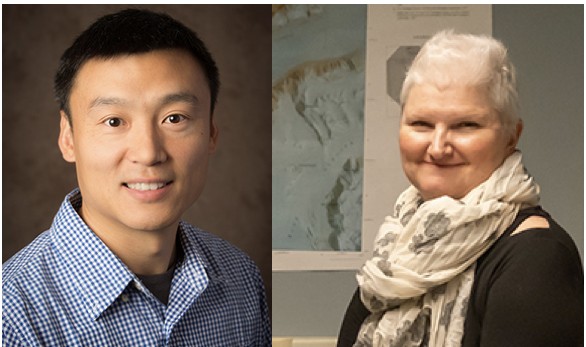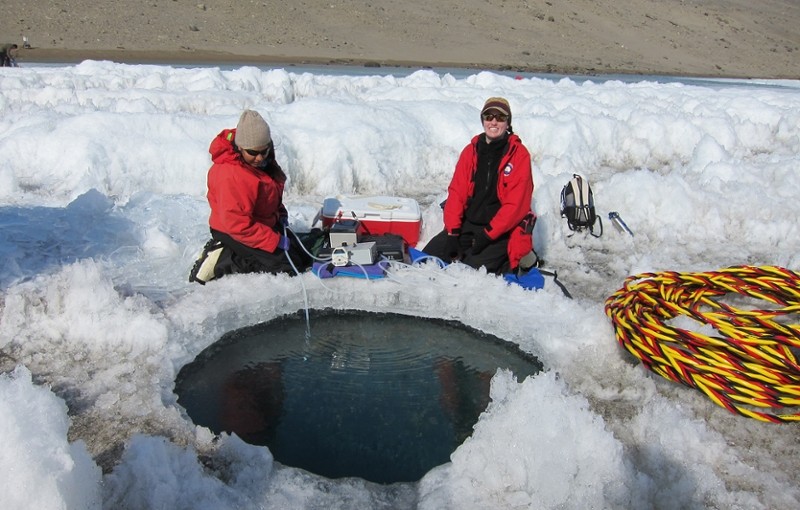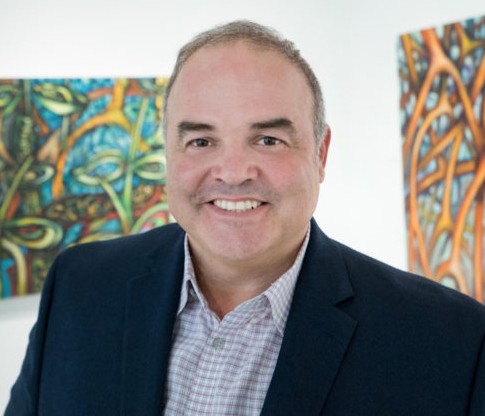

By Susan Meikle, university news and communications. Part one of a four–part series on new grants, new microbiology physiology-cluster.
Morgan-Kiss and Xin Wang: $750,000 grant from the DOE
Microbiologists Rachael Morgan-Kiss and Xin Wang recently received a $750,000 grant from the Department of Energy (DOE) to research how Antarctic algae use an alternative pathway during photosynthesis.
This pathway helps the algae to survive different environmental conditions such as light stress, high salinity and extremely low temperatures.
Photosynthetic microbes such as algae fix 50 percent of the global carbon dioxide, a major greenhouse gas. Although the process of photosynthesis was first described in the late 1800s, some of the critical processes which convert light into food (stored energy) are still a mystery, according to Morgan-Kiss.

Their project uses cold-adapted algae from ice-covered lakes in Antarctica to address questions about alternative pathways for converting sunlight into energy for carbon fixation.
Wang, who joined Miami last year after completing a post-doctoral fellowship at Texas A&M University, is an expert at metabolic engineering.
With new state-of-the-art equipment in his lab he will investigate the assembly of a protein supercomplex that provides high rates of the alternative photosynthesis pathway.
Photosynthesis, vital for agricultural yields, also has important applications in biofuel production.
- This research supports future approaches for improving photosynthesis performance of organisms under environmental stress.
- It provides new engineering targets for artificial photosynthetic platforms.
Collaborating with Morgan-Kiss and Wang on this project are Ru Zhang, principal scientist at the Donald Danforth Plant Science Center, and Petra Fromme, director of the Biodesign Center at Arizona State University (the Miami scientists share in $304,179 of the total award).
$3.38 million from the NSF for McMurdo Dry Valleys, Antarctica, Long Term Ecological Research
Morgan-Kiss and her collaborators are in the second year of a six-year grant to investigate the ecosystems of the McMurdo Dry Valleys, a polar desert on the coast of east Antarctica.
The McMurdo Long Term Ecological Research (MCM LTER) project has been observing these ecosystems for more than 25 years to document and understand how ecosystems respond to environmental change.
It is one of 28 National Science Foundation LTER sites nationwide.
Climate variation and connectivity
Morgan-Kiss’ team is exploring how the layers of connectivity in the McMurdo Dry Valleys influence ecosystem structure and function and how climate variation alters connectivity.
For instance, lakes and soils have been connected through cycles of lake-level rise and fall over the past 20,000 years. Streams connect glaciers to lakes over seasonal time scales.
.

Biotic communities(containing protozoa, algae, bacteria and microscopic nematodes) are structured by the environment and by the movement of individual organisms within and between the glaciers, streams, lakes and soils.
Using state-of-the-science tools and methods — including automated sensor networks, satellite imagery and next-generation DNA sequencing — the research team is testing predictions that accelerated changes in climate warming will lead to increased connectivity and exchange of biota, energy and matter.
- Morgan-Kiss’ graduate students Shasten Sherwell and Isha Kalra deployed to McMurdo Research Station, Antarctica this past December with other researchers from the team. They conducted eight weeks of field research and sample collection. This was Sherwell’s second Antarctic expedition.
- Eight universities collaborating: Collaborators on this project include principal investigator Michael Gooseff, associate professor of environmental engineering at the University of Colorado, Boulder, and eight other co-investigators from the Universities of Colorado and New Mexico; Brigham Young, Colorado State, Louisiana State and Montana State universities; and Virginia Tech (Morgan-Kiss shares $305,649 of the total award).

Morgan-Kiss’ research with Antarctic microbes has been supported by the NSF since she joined Miami in 2007.
Artist Xavier Cortada: Science, art, social engagement

All NSF LTER sites have an education and outreach component.
Internationally-known artist Xavier Cortada will work with Morgan-Kiss and her students in April to develop art works from their research projects.
He will also work with Morgan-Kiss’ lab research group to develop an art installation focused on their Antarctic study microbes.
Cortada’s science art practice is based on social engagement and the environment. He has created art installations in both the North and South Poles to generate awareness about global climate change.
He has been commissioned to create art for the White House and the World Bank, among other organizations.
He was an NSF Antarctic Artists and Writer’s Program Fellow in 2007. He serves as collaborator on the Antarctic McMurdo Dry Valleys LTER project and is involved with the Hubbard Brook (New Hampshire) and Florida Coastal Everglades LTERs.
He is Professor of Practice: Artist at the University of Miami, artist-in-residence at Pinecrest Gardens, Florida, and chair of the Miami-Dade County Cultural Affairs Council.
LINK TO ORIGINAL ARTICLE: https://miamioh.edu/news/campus-news/2019/04/rachael-morgan-kiss-xin-wang-microbiology-research.html